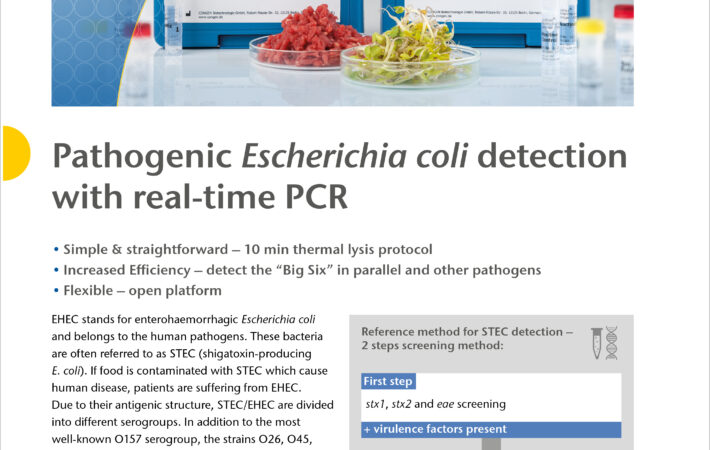
Bacterial toxins
Detect contamination with bacterial toxins in food
- Home
- /
- Analytes
- /
- Microbiology
- /
- Bacterial toxins
Analytes
Bacterial toxins
Some species of bacteria produce toxins. Ingestion of food contaminated with those bacterial toxins can cause severe cases of food poisoning.
The bacteria species Staphylococcus aureus, Staphylococcus hyicus as well as Staphylococcus intermediusproduce one or more heat-stable proteins which behave as enterotoxins (SET). SETs are the main causative agents of food poisoning next to Salmonellosis and Campylobacteriosis. Generally, it is assumed that a population of 5 x 10⁵ cells of enterotoxin-producing S. aureus strains per gram of food is required to lead to an intoxication. However, other studies show that only 100 – 200 ng of Staphylococcus enterotoxins can lead to symptoms of food poisoning.
SET intoxications have been frequently associated with pasta, finished meat products, ham, pies, chicken meat products, fish, fish products, milk, milk products, ice cream, egg products, salads, pastries and cake stuffing as well as preparations from these food products. The enterotoxins of the serological group A, B, C, D, E are very significant.
Another bacteria species that is able to produce toxins is the enterohemorrhagic Escherichia E. coli (“EHEC”). These bacteria build the toxic substances verotoxin or shiga toxin and are therefore also known as verotoxin-producing E. coli (“VTEC”) or shiga toxin-producing E. coli (“STEC”). Infections with STEC/VTEC are ranked as one of the most common food-related bacterial diseases that can even result in death. Sources of contamination mainly include raw meat and unpasteurized dairy products.


